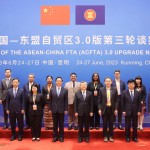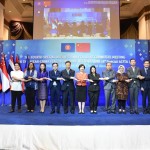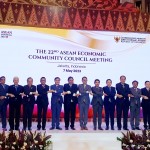Tổng số bài đăng 465.
 Foreign investors can invest under varying conditions depending on the free trade agreement they rely on. Some investments are allowed without restrictions under one free trade agreement but not under another. Others are allowed under WTO commitments but are restricted under the EVFTA, UKFTA or RCEP; or the other way around.
Foreign investors can invest under varying conditions depending on the free trade agreement they rely on. Some investments are allowed without restrictions under one free trade agreement but not under another. Others are allowed under WTO commitments but are restricted under the EVFTA, UKFTA or RCEP; or the other way around.
1. Building Blocks
The rules of market access generally define the receptiveness of a domestic market for foreign competition. As a general rule, market access is restricted to foreign entities. Under certain conditions, the laws of each country – including multilateral treaties on various levels – grant offshore entities the possibility to enter the domestic market and operate under equal conditions, competing for market shares with local companies.
In Vietnam, the specific rules for market access are committed in the country’s international treaties such as those to the World Trade Organisation (WTO) and other Free Trade Agreements (FTAs) with a variety of international counterparts. The feasibility of cross-border business expansion plans thus depends on the entity’s country of origin. When reaching to unlock an offshore market, each enterprise will be subject to country and industry-specific restrictions that open some segments of the local market to foreign investors and disallow foreign activities in other areas.
The history of foreign investment into Vietnam dates back to the year 2007, when the country officially acceded to the WTO. This was shortly after it had made specific commitments to the WTO that were approved with Vietnam’s membership on 7 November 2006. Vietnam thus became the WTO’s 150th member after having ratified the accession package domestically. While this was an important first step to allow foreign goods and services to access the country and contribute to the domestic GDP, these initial commitments only opened a crack in an otherwise solid wall of Vietnamese protectionism.
In the 15 years since then, Vietnam has made significant progress in the field of international market access, predominantly by negotiating and onboarding a number of beneficial bilateral or multilateral FTAs. Soon to follow were the Asian-China Investment Agreement (2009), the AFAS Commitments (2012), the Korea-Vietnam FTA (2015) that tied Vietnam in closely with regional trade partners. Many of these FTAs do not only outline preferential conditions for bilateral trade between member states, regarding tariffs, customs procedures, and rules of origin. Many of them also provide preferential terms for mutual market access, defining industries and business sectors in which foreign investment and competition by partner country enterprises.
2. New Rules
Today, Vietnam stands in the middle of a well-designed matrix of regional and global treaties. They grant domestic products and services access to foreign markets and define a framework for foreign business activities in Vietnam. Treaties like the Comprehensive and Progressive Agreement for Trans-Pacific Partnership (CPTPP), EU-Vietnam FTA (EVFTA), UK-Vietnam FTA (UKVFTA), as well as the Regional Comprehensive Economic Partnership (RCEP) have allowed Vietnam to position itself strategically as a trade and manufacturing hub in the Southeast Asian region. Through its traditionally close ties to the ASEAN Economic Community (AEC), Vietnam has experienced the promoting effect of FTAs and now seems to prioritize international trade integration trade partners outside ASEAN.
In the face of the rapid developments during the past one and a half decades, Vietnam’s rules for foreign investment and market access have undergone several revisions and facelifts in order to unify overlapping agreements and consolidate contradictory national regulations with the reality of its commitments on treaty level. The most recent significant move by the Vietnamese legislator to group the aggregate achievements of the county’s gradual opening towards foreign businesses together represents Vietnam’s new Investment Law that entered into force at the beginning of 2021. Together with its implementing regulations, it devises a new framework for foreign investment into Vietnam, which applies to all foreign businesses and takes into consideration (some of) the more recent developments in multilateral trade partnerships, as outlined above.
In addition to the Investment Law, Vietnam’s FTAs grant certain players preferential market access, which might be more beneficial than those that apply according to domestic investment law. To make use of the most beneficial conditions for their business in Vietnam (including tax and tariffs), foreign-owned entities should regularly revisit their corporate structure(s) and not miss out on any new developments in their area of operation.
3. Practical Perspective
To illustrate the potential differences between the various FTAs and their specific concessions to entities originating from member states, we may choose the business of Hospital Services (CPC 9311) and Medical and Dental Services (CPC 9312), and Rental/Leasing Services without Operators Relating to Other Machinery and Equipment (CPC 83109). This example will allow us to pinpoint the different levels of privilege that members of different FTAs will bargain for in Vietnam and understand how to implement these findings in practice.
Illustrating Examples
- CPC 9311 and CPC 9312
Under Vietnam’s 2007 WTO commitments, these two business activities are permitted with the following restrictions: The minimum investment capital for a commercial presence in hospital services must be at least US$20 million for a hospital, US$2 million for a policlinic unit and US$200,000 for a speciality unit.
While the WTO commitment is available to all members of the organisation, the EVFTA removes all of the above restrictions for all EU members states in CPC 9311 and CPC 9312. Similarly, RCEP also devises less restrictive conditions for foreign investment for investors from member states, however without completely opening them: Foreign service suppliers are permitted to provide services through the establishment of 100 per cent foreign-invested hospital, a joint venture with Vietnamese partners, or through a business cooperation contract. The minimum investment capital for a commercial presence in hospital services must be at least US$20 million for a hospital, US$2 million for a policlinic unit, and US$200,000 for a speciality unit.
An investor from an EU member country will therefore face fewer conditions and hurdles when entering the Vietnamese healthcare market than WTO and RCEP members.
- CPC 83109
Foreign investors cannot provide these services under Vietnam’s 2007 WTO commitments nor RECP. However, under the EVFTA it is allowed with restrictions: Foreign service suppliers may only provide services through joint ventures with Vietnamese partners, with foreign equity not exceeding 51%.
4. Conclusion
While countries can potentially be a member of more than one international treaty with overlapping geographic scope, it makes sense to perform due diligence regarding the best conditions for market access and to plan any investment activities into Vietnam accordingly.
Source: ACSV Legal












